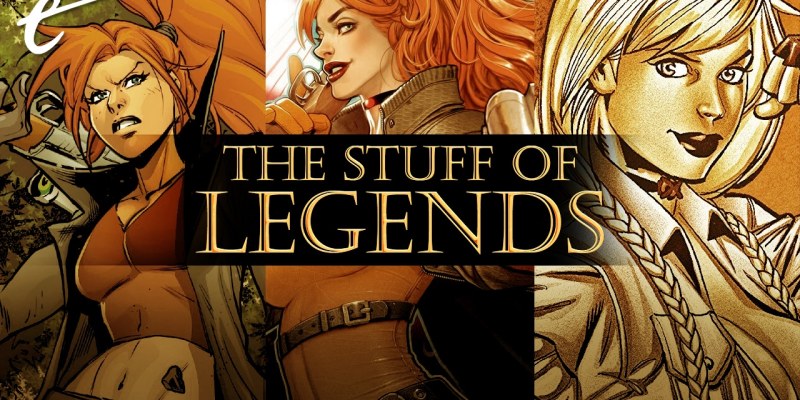Marvel’s comic universe is full of powerful personalities. Yet for every Spider-Man or Deadpool, there’s someone waiting in the wings that deserves a proper chance to shine. With the Marvel Cinematic Universe (MCU) cycling out the old guard for more unconventional heroes like She-Hulk, Blade, and Moon Knight, there’s one particular monster hunter who’s owed a live-action adaptation: Elsa Bloodstone.
Elsa Bloodstone holds the unique distinction of going through multiple rebirths and also being an heir apparent to a legacy character like Ms. Marvel and Miles Morales. Her father was Ulysses Bloodstone, a character from the 1970s who was functionally immortal yet canonically died anyway owing to a series cancellation. Elsa Bloodstone was brought into the Marvel Universe 25 or so years later in the self-titled Bloodstone by Dan Abnett, Andy Lanning, and Michael Lopez. Though an interesting premise, it was an odd continuation.
Despite claims to the contrary, Elsa was presented less as a unique badass, and more like Marvel chasing after Buffy and Tomb Raider, with barely contained breasts in a half-tied shirt and skin-tight pants. There is the unique inclusion of vampire politics and negotiating with Dracula, but this particular series ended up being a forgotten four-issue run for a reason.
This Elsa only appeared again in Iron Man: Viva Las Vegas, a story with such varying canonicity that Marvel just gave it its own timeline. Which is all the more hilarious due to being written by Jon Favreau and receiving a nod to its version of Fin Fang Foom in the MCU. Outside of a source book reference guide, this was the last of Elsa’s blonde phase.

From the ashes of a middling launch, Elsa Bloodstone joined Monica Rambeau, Boom Boom, Machine Man, and The Captain in Nextwave: Agents of HATE. Warren Ellis and Stuart Immonen’s uproariously self-aware parody of the Marvel Universe is the crucial turning point in Elsa and her teammates’ development.
Nextwave is essentially the Venture Bros. of Marvel Comics. It’s crass, absurd, and excessively violent, yet despite how much it beats the stuffing out of its cast, it cares about them. And short of Monica’s impressive rising role as team leader, Elsa was far and away the next biggest success.
Elsa became a ginger monster-hunting badass, touting twin shotguns and Uzis with thigh-high stiletto boots matched by a coat billowing in the breeze. She traded in her barely there shirt for a mix of combat suits and corsets. Elsa was still preposterous as hell, but now she was in on the joke. Nextwave saw her shooting rabid piranha koalas out of the air that exploded, then beating vegetable men into a pulp with guitars while firing off one-liners.
To say this transformation saved her is an understatement. Elsa went from a pin-up girl to Marvel’s very own Bayonetta by way of Ash Williams. Some of the most memorable parodies and scathing jokes are delivered by or through Elsa’s badassery in the pages of Nextwave. While the comic has always been held as only loosely canonical due to the sheer absurdity on display, it gave life to its starring cast. Monica has even managed to enter the MCU with WandaVision.

In the years since Nextwave, Elsa’s become a mainstay, especially in major crossovers. Not unlike the MCU’s Hulk, her character arc was pieced together alongside others’ stories. We learn after Civil War that she’s grappling with her horrendous upbringing under her father by choosing not to continue the family bloodline. Rather, she wants to rid the entire world of monsters so that the Bloodstones are never necessary.
However, her time teaching at the Braddock Academy shows she does want to leave something behind other than bodies, including trying to guide her distant brother Cullen into becoming a hero. Instead of being defined by her father’s legacy, Elsa charts her own. She regularly displays compassion for youth, such as with Cullen and Kid Kaiju, which is contrasted by a willingness to fight dirty and use lethal weapons.
In recent years, Elsa Bloodstone has featured in a couple games as well, Marvel Contest of Champions and Marvel Ultimate Alliance 3, the latter finally giving her a proper voiceover.
The unique mixture of heart, cockiness, ruthless destruction, and improvisational combat skills makes Elsa Bloodstone a perfect fit in the current street-level emphasis the MCU has been going for. She would especially fit in Blade, given she’s immune to vampire bites due to the Bloodstone she wears around her neck.

Above all else though, what makes Elsa an attractive character for adaptation is her versatility. You can put Elsa Bloodstone virtually anywhere, and she’s still authentically herself. She’s been everything from the last woman on Earth fighting zombies during the Battleworld crossover to partnering with Jessica Jones on a PI case. She and the Nextwave team even beat up an angry incel demon and his army of golems. She dated Deadpool and helped Morbius protect reformed monsters who gave up their violent ways.
That ability to adapt yet remain authentic is the core of what makes a great Marvel character work. It’s what leads to the kinds of crossovers and hijinks people go on about. While more comics fans than ever know of the flame-haired monster hunter, it’s time for Elsa Bloodstone to enter the mainstream.
I mean, let’s face it, she’s got better odds of coming to the MCU than Zayne Carrick does of showing up in a Star Wars show.
